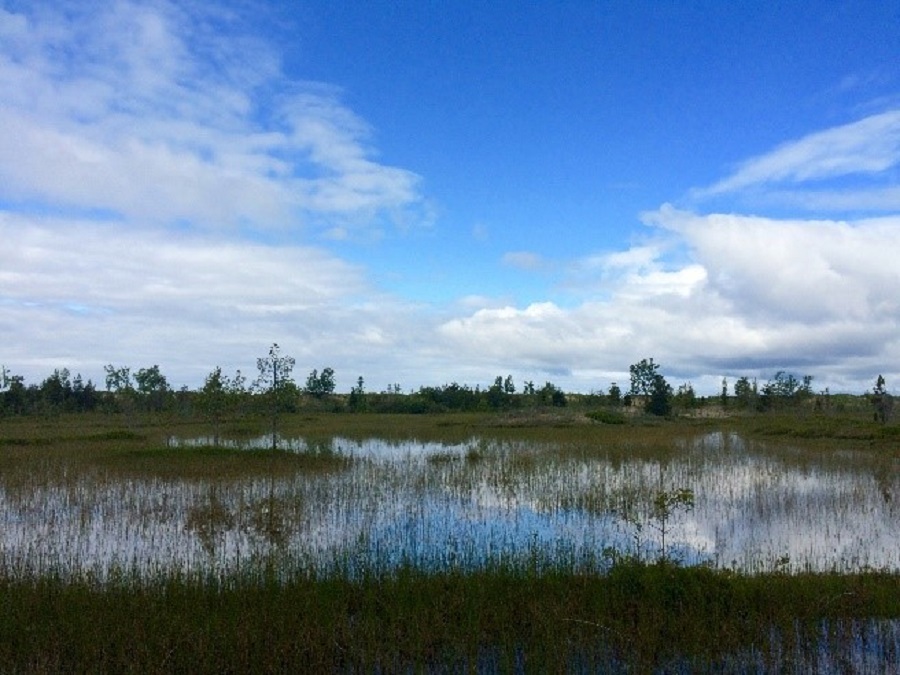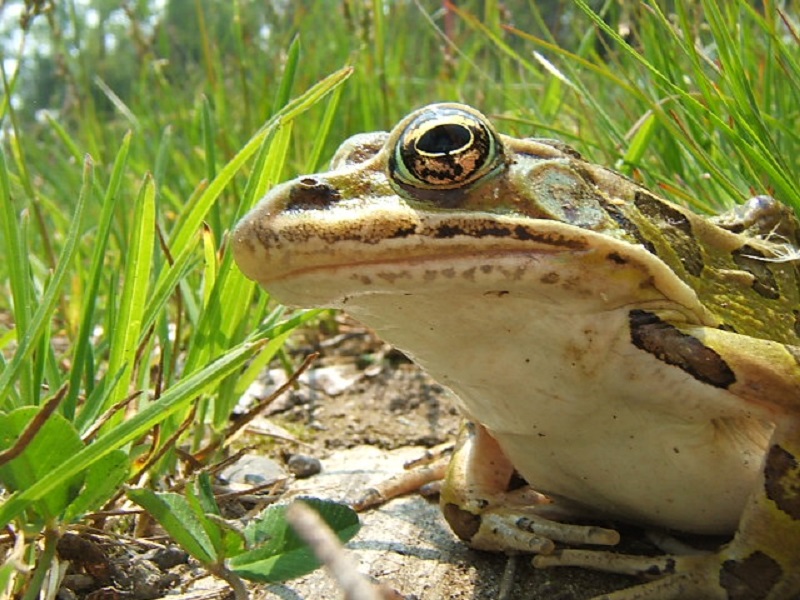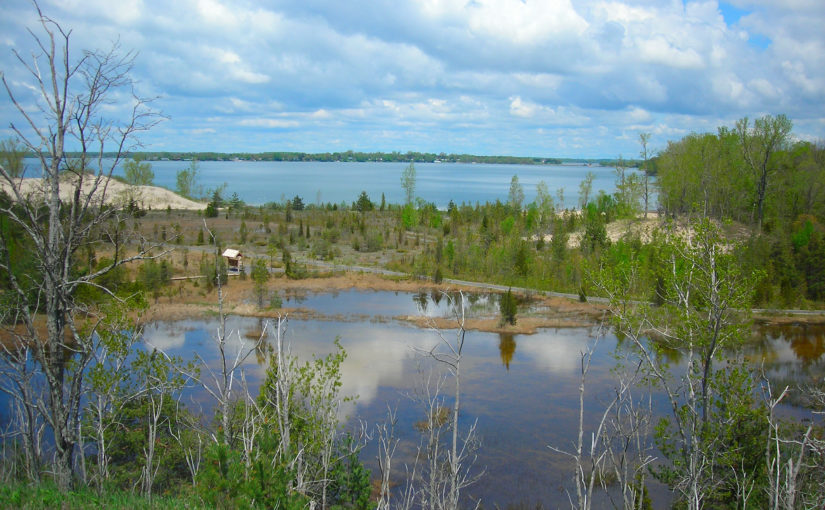Today’s post comes from Erica Seely, a Discovery Guide at Sandbanks Provincial Park.
Landscapes change drastically with the seasons and spring is a great time to visit Sandbanks’ pannes — as long as you don’t mind getting your feet wet!
A rare habitat
Pannes are wetlands, but they are very different from marshes and swamps.
One of the main differences is that pannes are alkaline (or basic), which allows some very specific plants to grow here, including rare sedges and beautiful flowers that are uncommon elsewhere.
Horsetails are common and easy to spot, because they look a lot like small bamboo!

The amount of water in the pannes changes throughout the year. In spring, they can easily be a metre deep in places, thanks to snowmelt and spring rains.
They usually begin to dry by June and may become bone-dry in late summer.
This spring, water levels are extremely high, influenced by Lake Ontario’s water levels, which are much higher than normal.
Panne-demonium
I’ve had my own personal experience with the fluctuating pannes.
Last summer was my first working at Sandbanks, and I was very excited to put on hipwaders for the first time and walk through one of our largest panne habitats full of water.

Our goal was to remove Scots Pine, an invasive species. Imagine my surprise when we got out there and found absolutely no water, not even mud!
Rookie mistake, as I had not realized how drastically the water levels had changed throughout the summer.
Creatures of the panne
Animals are greatly affected by changes in water levels. Right now, the pannes full of water and act like a “normal” wetland.

Ducks and Canada Geese are nesting and raising young.
Frogs and toads can be heard calling – listen for Leopard Frogs, Western Chorus Frogs and American Toads. Soon enough, tadpoles will be seen swimming around in the water.

In dry years, some of them don’t make it, as they don’t have time to develop into frogs before the water disappears.
Fortunately, this year will be a good year for them! Predatory fish aren’t found in the pannes, which increases tadpole and aquatic invertebrate survival rates.
But they do need to beware of Blanding’s and Painted Turtles that are often seen snacking here!
Once the water begins to dry up, many of these animals make their way to permanent water bodies like West Lake or Lake Ontario.
Experience this wonderful wetland in person!
When you stop by Sandbanks this spring, make sure to take a walk along the Dunes Trail. One of our largest pannes, located directly behind Dunes Beach, can be admired from this trail.

Listen for the mating calls of frogs, search for Horsetails, look out for fuzzy baby birds, and try to spy a turtle!
And be prepared to get your feet a little bit wet – you’re in a wetland after all!
